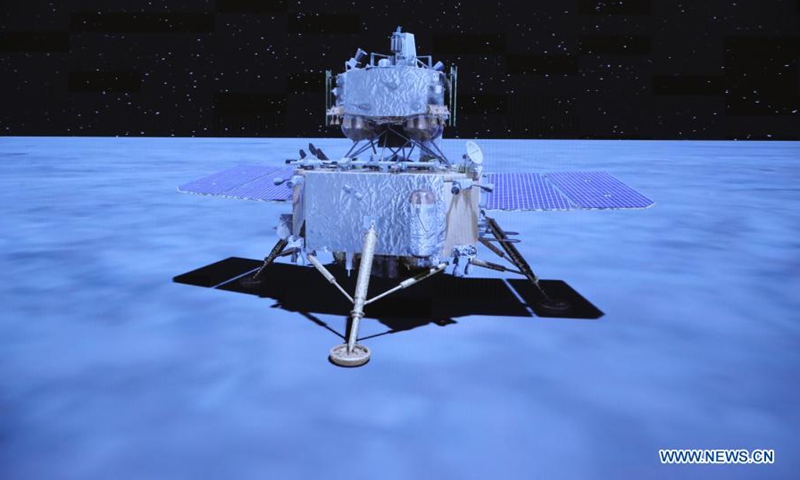Two-launcher, double-docking manned moon landing more reliable and economic, fully plays China's technology advancement

The recently revealed primary plan for China's crewed moon landing before 2030 where China in which attempt to use two launch vehicles and carry out two rendezvous and docking missions in lunar orbit, has drawn attention worldwide, and the China Space News, an authority news service for state-owned aerospace contractors, further explained that such plan would be highly effective in using China's most advanced space technology and more reliable and economic given it does not rely on the development of a special super heavy-lift rocket to achieve the goal of sending taikonauts to moon.
When the US and Soviet Union tried to execute a manned moon landing, the rendezvous and docking technology had yet to mature and it was also difficult to launch two or more launchers one after another within a short time period. So to develop a super heavy-lift rocket to send moon lander and crewed spacecraft all in one go was the easier and safer path to achieve the goal.
But things are different now. The current reality is that to develop a new-generation heavy-lift carrier rocket would take longer time and cost much more, let alone the difficulty. For example, the development for the US Space Launch System (SLS) took more than 10 years and counting, cost reached somewhere around $50 billion and the SLS is still using interim upper stage, the report pointed out.
Since China has mastered rather matured reliable space rendezvous and docking technology, a two-launcher path would be more reasonable and also feasible.
Zhang Hailian, deputy chief engineer with the China Manned Space Agency (CMSA), disclosed earlier this month that China plans to realize a manned moon landing before 2030, and the country will attempt to build a moon-based scientific research station, in a bid to carry out long-term, systematic lunar research and verify relevant technology.
China will attempt to use two launch vehicles to send a moon surface lander and manned spacecraft into lunar orbit before they carry out rendezvous and docking with each other. Following this maneuver, the taikonauts onboard the manned spacecraft will enter the lander, Zhang said.
Taikonauts will carry out scientific exploration and sample collecting after they descend to the moon's surface using the lander. After completing all preset missions, they will engage the lander to ascend and dock with the manned spacecraft waiting in the lunar orbit, he said.
Then taikonauts will take the lunar samples and ascend from moon surface with the lander that will dock with the manned spacecraft again in lunar orbit before they return to Earth in the manned spacecraft.
A Beijing-based space watcher, who requested not to be named, told the Global Times on Tuesday that China's path of using two launchers for moon landing is no doubt most cost effective, and it fully takes advantage of China's technology strengths in terms of increasingly matured space rendezvous and docking ability which is repeatedly verified and honed in China Space Station missions over the recent years.
Leading Chinese rocket scientist Long Lehao has shown his own vision of China's moon landing in 2021, which also included two launch vehicles carrying a lunar lander and a next-generation manned spaceship for the mission, and the two parts of the spacecraft will rendezvous and dock in near-lunar orbit, before executing the landing process.
But different from Long's vision where he referred to the two launchers in question as Long March-5 DY - variant of the 57-meter-long Long March-5, China's strongest launcher in service, China is now developing the Long March-10 carrier rocket for the moon landing mission.
The new launcher will be a three-stage rocket with two boosters, weighing 2,187 tons at launch, increasing payload launching capability from Long March-5's 8.2 ton to the Lunar transfer orbit to around 27 ton, according to the China Space News, which is equivalent to the US SLS.
Considering that the development cost of the Long March 10 rocket is much lower than that of several heavy rockets in the United States, there is no doubt that China's manned lunar landing program will be more cost-effective and sustainability, the report noted.